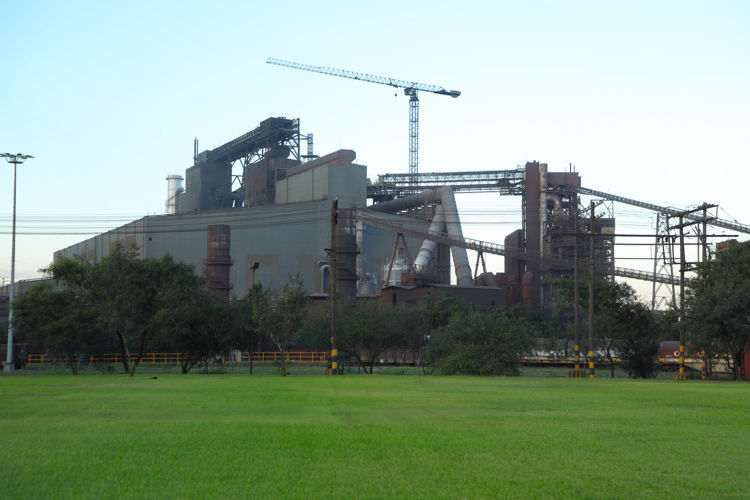
With an approximate investment of USD 1.4 million, the company has significantly increased its capture of CO2 at the Guerrero and Puebla mills.

Caring for the environment is one of Ternium's top priorities, and accordingly, the company has developed a range of different initiatives to make its operations more sustainable.
Leading the field, the company's decarbonization route has been presented in February 2021, a strategy designed to reduce its CO2 emissions by 20% between now and 2030.
Ternium in Mexico has made major progress down this route with a number of different initiatives, including a program to increase the capture of CO2 in its Direct Reduction areas at the Guerrero and Puebla mills in Mexico.
For Phase 1 of this plan, the company invested some USD 1.4 million, enabling it to increase overall installed capture capacity at both facilities by 34%, a total of 284,602 tons per year. The CO2 captured is sold, ending up in applications for industries, such as the food and beverages sector and medicine. This is groundbreaking work at a commercial scale, and Ternium is one of the few companies in Mexico pioneering this type of activity.
Firing the starting gun at Puebla
In June 2021, the REDI area at the Puebla mill changed the gas feeding its CO2 absorber, thus increasing installed capture capacity to 66,332 tons per year, up by 23%.
For this, the Puebla team changed out reforming gas (used at the time to feed the absorber) for recycling gas.
The project contemplated an investment of USD 900,000 in major changes, such as valves and gas lines, as well as installing the new infrastructure required. In addition, the control and protection systems were upgraded to ensure the proper functioning of the absorber.
"We are pioneering a brand new form of environmental decarbonization compliance. There's no doubt that for Ternium, this is just the beginning, with the first project at industrial level and of this size aimed at decarbonizing in the environmental context," commented Juan Carlos Rodriguez, director of the Puebla Mill at the time.
Guerrero mill is all in
At its Guerrero mill, in October 2021, Ternium installed a new compression station and a second pipeline running from the REDI chimney to the CO2 treatment company Linde.
Thanks to an investment of USD 700,000, the new infrastructure helped to raise installed capture capacity by 38% to 218,270 tons annually.
"Avoiding the emission of any amount of CO2 into the atmosphere is a direct contribution towards reducing the atmospheric concentration of greenhouse gases and, consequently, global warming," declared Maria Eugenia Chavez, Environmental engineer, at the time, "Ternium's commitment to the environment has been very clear over the years and will continue to be so."
Phase 2 is around the corner
Different studies are currently being carried out at the Guerrero and Puebla mills to establish the situation at both plants, from an engineering perspective, to ensure they have all the information needed to increase CO2 capture levels.
At Guerrero, the study includes an overlook of the 3M and 4M plants in the Direct Reduction area, revealed Albes Urdaneta, head of Energy Efficiency at Ternium in Mexico.
"We're taking into account everything we would need to do to enhance the 3M and 4M and thus be able to capture more CO2," he explained. Once the study is completed, Ternium will analyze the best placement for equipment and infrastructure, such as a new absorber, a regenerating tower, heat exchangers, pumps, and steam generators, all necessary to increase capture.
"This study is vital, as although we already know how an absorber operates and we have a clear idea of what equipment is required, we also need to understand the dimension of the project as a whole. This means knowing how much steam to use, at what pressure, how much water we need, and how the project will impact Direct Reduction processes. The idea is to get a full picture of this phase," explained Urdaneta.
When Phase 2 is completed at the Guerrero mill, the current installed capture capacity could rise to approximately 336,000 tons per year, 54% more than today.
In Puebla, the team is also undertaking an in-depth analysis to establish the engineering requirements involved in increasing CO2 capture. In fact, with this project, Ternium could move up its CO2 capture capacity by a further 96%, to approximately 130,332 tons at that plant.
The successful completion of Phase 2 at both plants would allow Ternium to capture some 466,332 tons of CO2, the equivalent of removing 101,346 cars per year from a city.